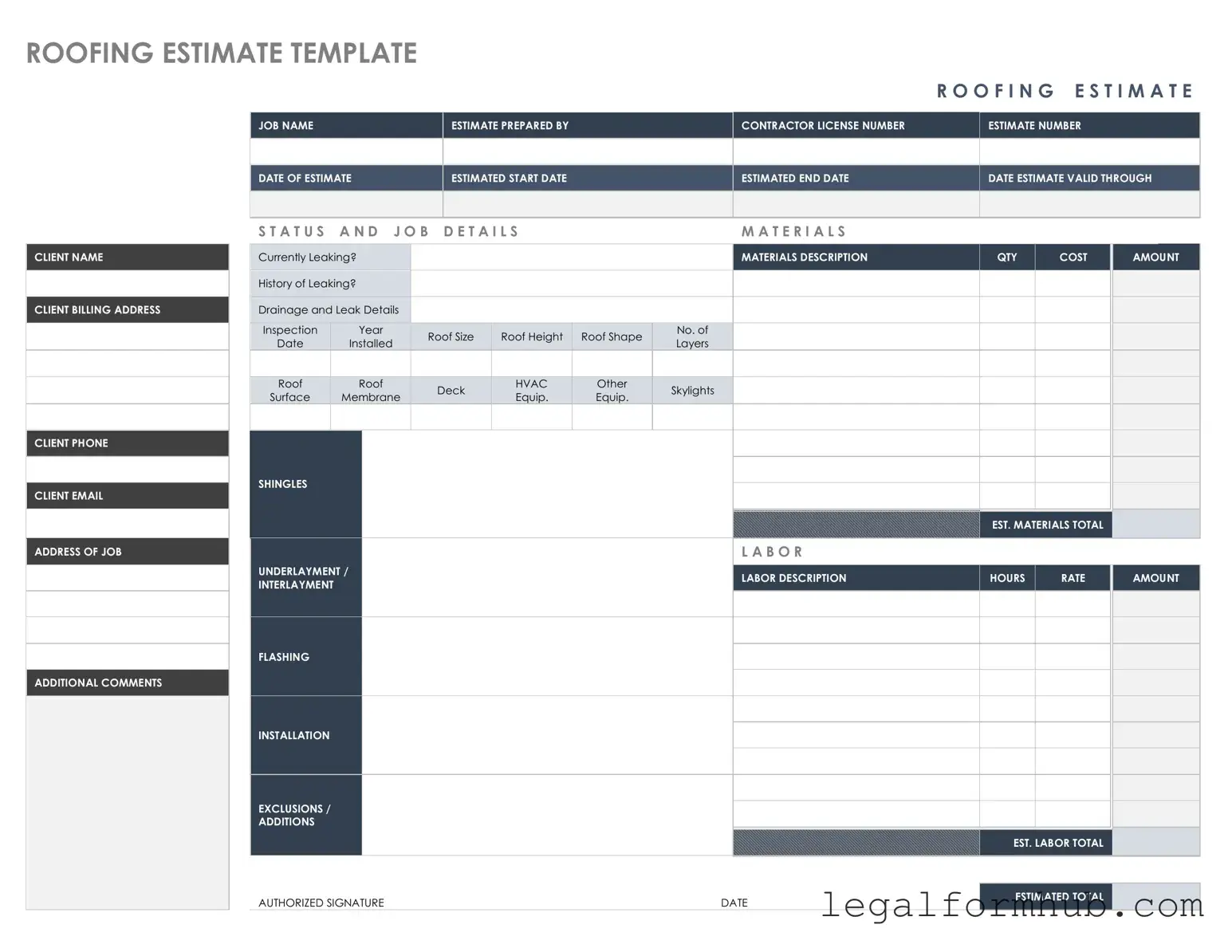The Roofing Contract is a key document that closely resembles the Roofing Estimate form. Both documents outline the details of the roofing project, including the scope of work, materials to be used, and the overall cost. However, while the Roofing Estimate provides a preliminary assessment of costs, the Roofing Contract serves as a binding agreement once both parties sign it. This transition from estimate to contract solidifies the commitment of both the contractor and the homeowner, ensuring that all parties are on the same page regarding expectations and responsibilities.
The Work Order is another document similar to the Roofing Estimate form. Like the estimate, a Work Order details the specific tasks to be completed and the associated costs. However, the Work Order is typically generated after the estimate has been accepted. It serves as a directive for the contractor to commence work, providing a clear outline of what needs to be done. This document is crucial for tracking the progress of the project and ensuring that the agreed-upon tasks are completed in a timely manner.
For those preparing to embark on a rental agreement, understanding the framework of a proper Lease Agreement document is crucial. This document not only clarifies rental terms but also helps in protecting the rights of both landlords and tenants throughout the leasing process.
The Invoice is also comparable to the Roofing Estimate form in that it provides a breakdown of costs related to the roofing project. While the estimate gives a forecast of expenses before work begins, the invoice reflects the actual costs incurred once the project is completed. It includes details such as labor, materials, and any additional charges. This document is essential for the homeowner to understand the final financial obligation and serves as a formal request for payment.
The Change Order is a document that can arise during the roofing project, similar to the Roofing Estimate form. This document is used when there are modifications to the original scope of work outlined in the estimate. Whether due to unforeseen circumstances or changes requested by the homeowner, a Change Order details the new work to be performed and any adjustments to the costs. It ensures that both parties agree to the changes, helping to prevent misunderstandings and disputes later on.
